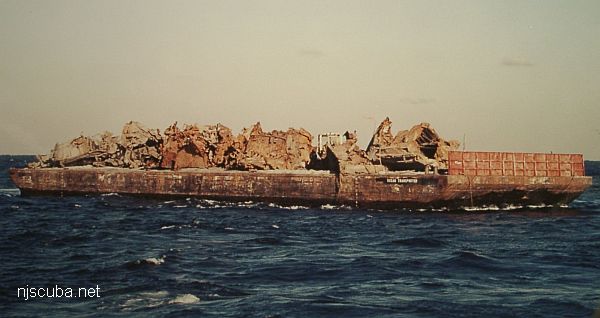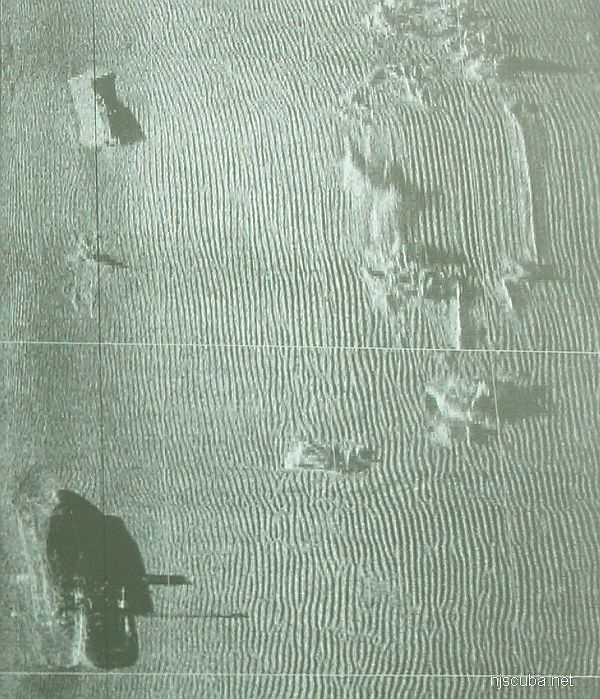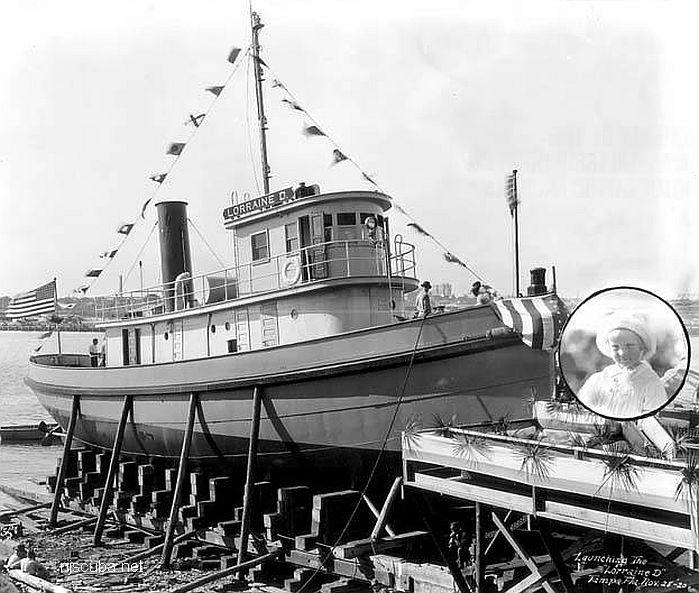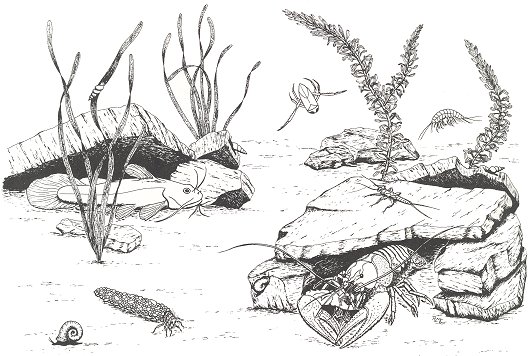Horseshoe Wrecks

- Type:
- artificial reef, barges, tugboat
- Specs:
- ( huge junk pile )
- Sunk:
- Sunday December 23, 2012 - Sea Girt Artificial Reef
- GPS:
- 40°08.203' -73°55.779'
- Depth:
- 80 ft

Side-scan sonar image showing the proximity of the brand new "Travis Tug", at lower-left, and the broken-down Horseshoe Wrecks, sunk more than ten years earlier. The tug is 95 feet long.
These jumbled piles of steel wreckage greatly resemble the Mohawk. However, unlike that vast and confusing field of debris, this site is relatively easy to navigate, since it is all relatively linear. Some of the pieces are quite tall and can be gotten inside of.



Questions or Inquiries?
Just want to say Hello? Sign the .